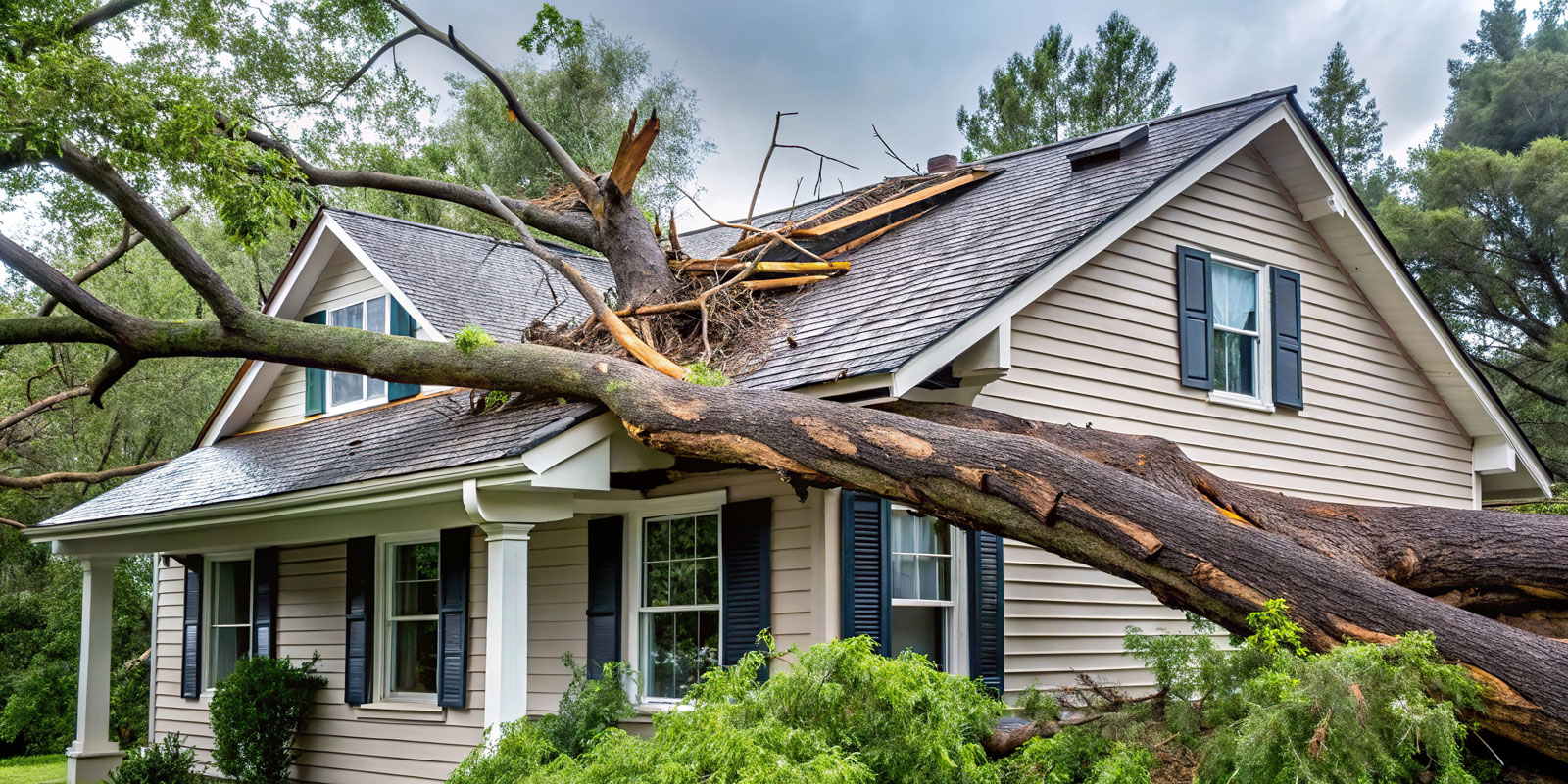
Trees are beautiful and beneficial, but when one falls unexpectedly, it can leave homeowners feeling uprooted both emotionally and financially. Whether it’s a massive oak crashing onto a roof during a storm or a neighbor’s tree shedding limbs onto your property, resolving the aftermath requires understanding liability, insurance coverage, and your options for cleanup.
If you’ve found yourself asking questions like, Who is responsible for a tree damaging my property? or Does homeowners insurance cover tree removal?, we’re here to provide the clarity you need.
Understanding Tree Damage and Liability
First, let’s address this key point: who is responsible for tree damage? The answer? It depends!
Here are some common scenarios to help you understand liability:
1. Nature’s Fury vs. Negligence
- If a tree falls due to “natural causes” like a storm or wind, it’s considered an act of nature. The property owner where the damage occurred is usually responsible for cleanup—even if it’s your neighbor’s tree.
- If negligence is involved, responsibility shifts. For example, if your neighbor knew their tree was diseased and ignored it, they could be liable for the damage.
2. Health Check on the Tree
The condition of the tree matters. Is it healthy or diseased? A well-documented history of damage or decay can shift liability if you, the property owner, failed to address the risk.
3. Location is Everything
Trees growing directly on property lines are considered jointly owned, meaning both you and your neighbor may share responsibility. If a dispute arises, referencing property surveys can clear things up.
Does Insurance Cover Tree Damage?
Now to the big question on every homeowner’s mind: does your homeowners insurance have your back? The short answer is usually yes—but with some specifics to consider:
1. Damage to Insured Structures
If a tree damages your house, fence, or garage, your homeowners insurance will typically cover repairs and tree removal—but that’s subject to your deductible (and coverage limits).
2. Tree Removal Coverage
Insurance often covers debris removal if the tree landed on an insured structure, such as your home or car. However, most policies cap this at $500-$1,000. If no insured structure is damaged (e.g., the tree just falls in your yard), you’re likely footing the cleanup bill yourself.
3. When a Neighbor’s Tree is to Blame
We often hear this question: “My neighbor’s tree fell in my yard, but nothing was damaged. Who pays?” If the tree didn’t damage any of your insured structures, you’re likely responsible for cleanup. Check your homeowners policy to see if it covers the debris removal.
However, if the tree damaged any of your insured property, your insurance may cover the damage on your property and the removal of the tree.
If you been warning your neighbor that a tree on the neighbor’s property could potentially cause damage to you, and you also have documented proof (emails, photos, etc.), you can file a claim against your neighbor’s insurance with a stronger case of negligence.
4. Tree Hits Your Car
If a falling tree damages your car, it falls under your comprehensive auto insurance. Meanwhile, removing it from your property might involve your homeowners insurance.
Pro Tip: Always check your policy thoroughly or consult with your insurance provider. The fine print matters! If you find you don’t have sufficient coverage, contact us to enhance your policy.
Resolving the Aftermath
If disputes or damage arise, it’s vital to know what to do next. Here’s your step-by-step guide:
1. Document Everything
- Take detailed photos of the damage and the fallen tree.
- If possible, gather evidence of negligence (e.g., emails or notes about previous concerns).
2. File an Insurance Claim
- Contact your insurance provider immediately to start the claims process.
- Provide all necessary documentation to speed up approvals.
3. Communicate with Your Neighbor
- If a neighbor’s tree caused the damage, approach them calmly but firmly. Working together often prevents unnecessary legal battles.
4. Know When to Consult Legal Experts
- If negligence is at play and your neighbor denies responsibility, legal action might be necessary to resolve the dispute and recoup costs.
Protect Yourself Before the Fall
To avoid future disputes, consider these preventative measures:
- Trim and Inspect Regularly: Keep your trees healthy to minimize risks.
- Communicate with Neighbors: Discuss concerns about trees near property lines before disaster strikes.
- Review Your Insurance Policy: Ensure you understand what’s covered and adjust if needed.
When in doubt, having a trusted insurance advisor can make all the difference. They’ll help you navigate complex scenarios and provide peace of mind.
Final Thoughts
Dealing with fallen trees can be frustrating, but with a bit of preparation and understanding, you’ll be equipped to handle the situation like a pro. Whether it’s reviewing your insurance plan, documenting concerns, or staying proactive with tree care, these small actions can save you major headaches down the line.
Looking for more tips to protect your home and property? Contact us at https://www.hilbgroup.com/personal/.
